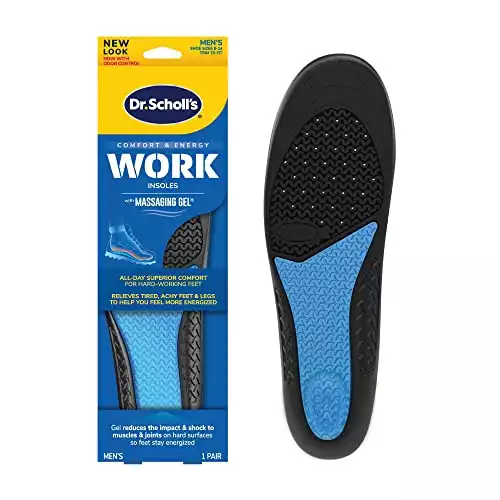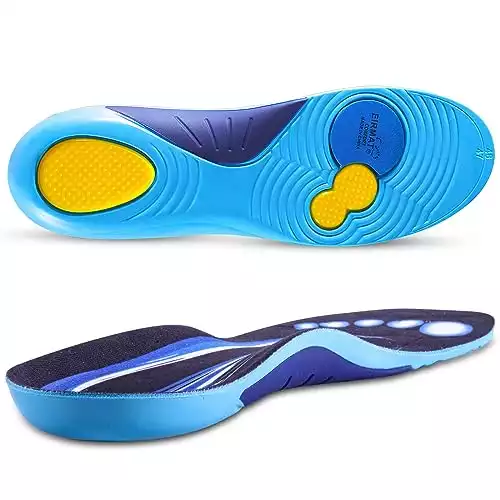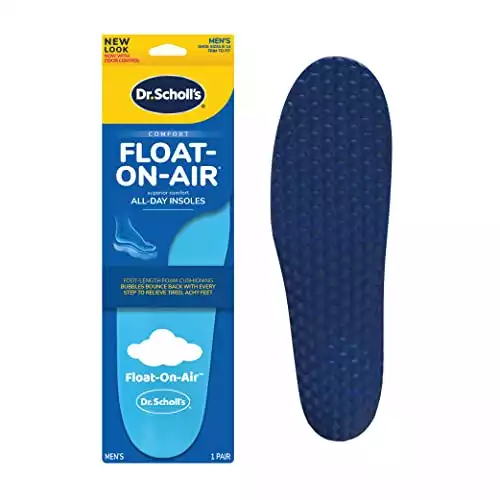Insoles and orthotics can provide pain relief for feet, back, and knees. No wonder people are adding new insoles to their shoes. If you want to replace your insoles, what should you do?
You should replace your insoles between 6-12 months with regular use. Check to see if your soles are providing the support and cushioning you’re looking for. If not, it’s time to change them for happier feet and joints.
When I used my hiking shoes, I found that the insoles didn’t support my arch and I felt some pulling on my arch that caused some pain. I added another insole and it helped out. We’ll find out the right time to change insoles and when you should add to or replace your insole.
Reminder chart for choosing your insoles.
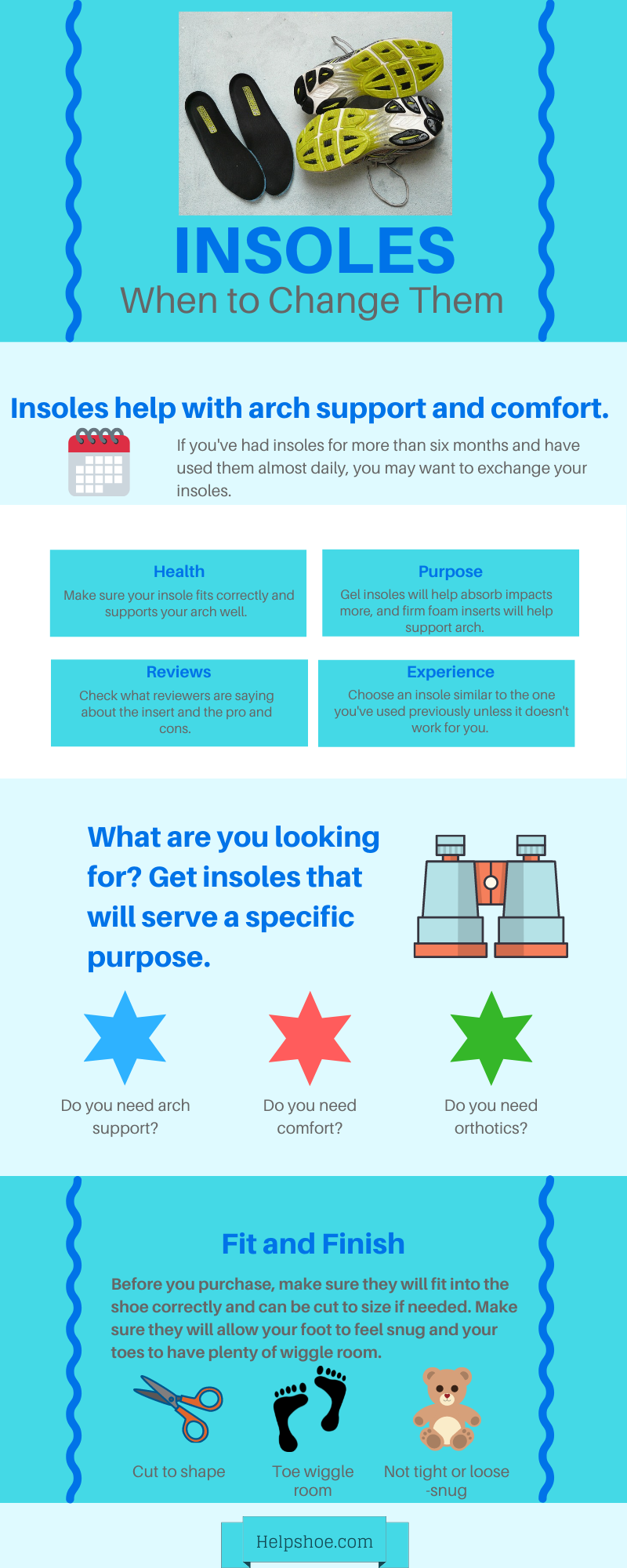
Investigating Your Insoles for Effectiveness
Depending on the type of shoe that you have purchased your insoles may be supportive and provide cushioning. Others may be flat and unsupportive.
Take a look at your insoles by pulling them out of your shoes. Most insoles will come out of your shoe easily, although some are glued in.
- Check for bad smells and excessive moisture.
- Check for wear, tearing, and deterioration.
- Check for how compressed they look.
- Check for arch support.
- Check to see if they are fitting correctly in the shoe.
Keep in mind that most insoles are just thin layers of foam that help provide some comfort and support.
If your insoles are glued in, you can check for how supportive they are by applying pressure with your fingers and checking visually.
If you want to compare insoles, you can stand on two different insoles from two different shoes and check out the differences.
The insole and the midsole are designed to work together. You might want to stand on the insole outside the shoe and inside the shoe, to check for both comfort and support.
Keep in mind the insoles that came with your shoes will most likely fit better than any insole you buy, but if they are not working for you, it may be time to make a change.
Types of insoles 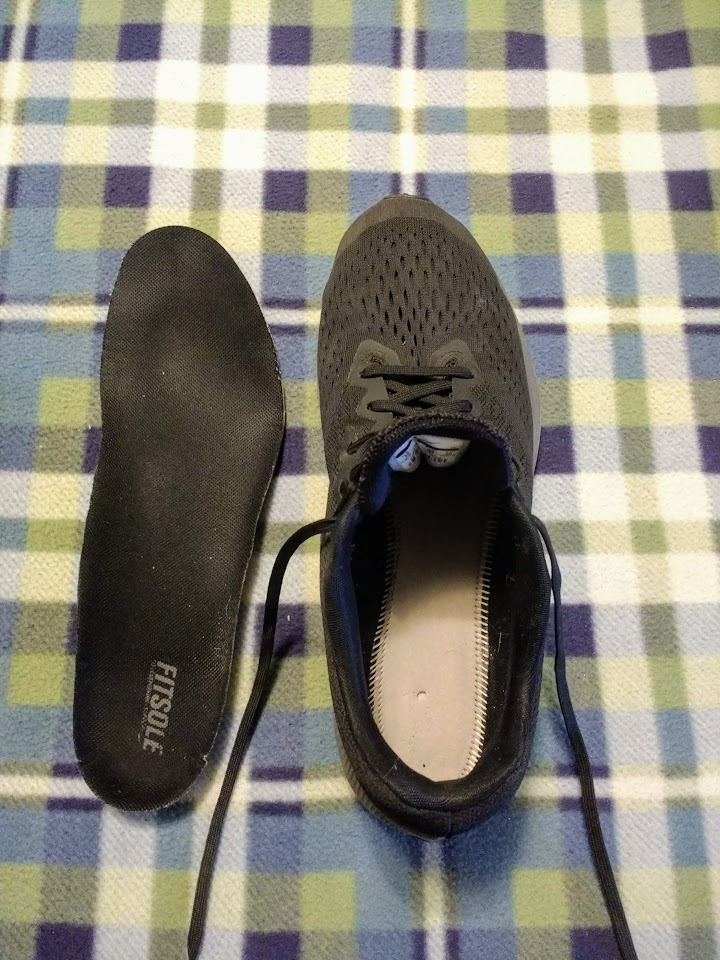
Running shoes will provide more support in general than your standard casual shoe. Many running shoes have a thicker foam layer and a supportive cushioning insole.
When I had a pair of running shoes they provided support for a couple of months as I ran 2-3 times a week. But then I noticed my knees started hurting and I decided to get some gel insoles.
The gel insoles helped with impact absorption and helped my knees feel better. But they were not meant for arch support, just of impact absorption. I needed some arch support and cushioning.
My knees felt better, but I determined that the overall shoe design wouldn’t continue to be effective because the outer soles seemed too compressed and would not give me enough cushioning and support.
Some running shoes may never need a new insole because the midsole is so effective unless the insole becomes worn out before the outer soles do.
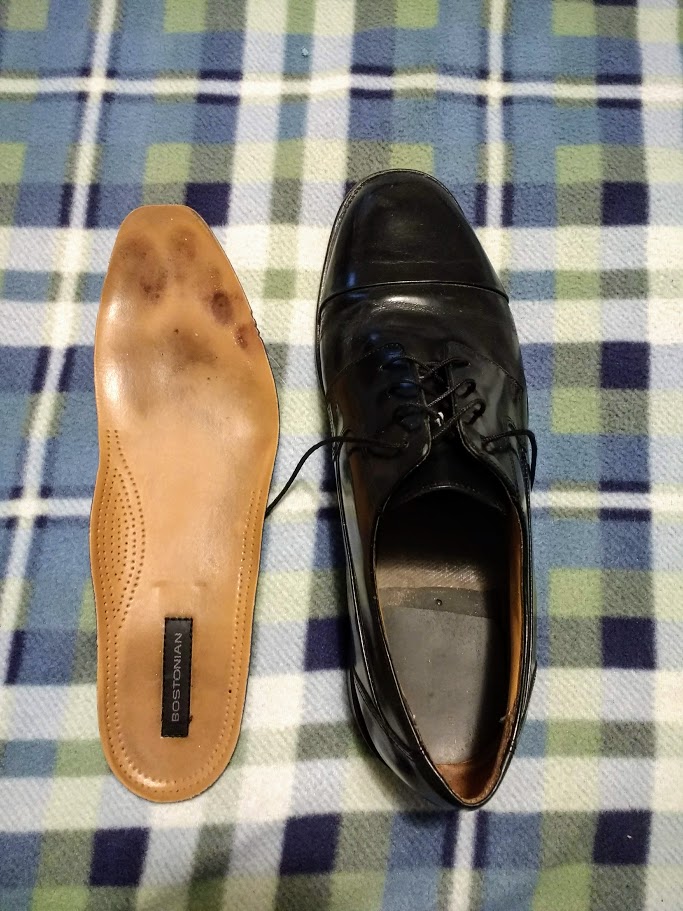
Dress shoes in contrast may have little cushioning in the midsole and a thin insole on the inside.
If you’re planning on using your dress shoes a lot then putting an additional insole inside your dress shoe might be a good investment for your comfort and foot health.
If you can’t take out the insole place a new one on top. If your shoes have room an insole may provide additional support and cushion.
After you’ve examines the effectiveness of your insole, it’s time to decide whether to keep them, add to them, or replace them.
Change Your Insoles

Now that we have more types of shoes to choose from than ever, there are also more types of insole replacements than ever. Your best bet may be to go to a shoe store and feel and examine insoles that you are interested in.
When choosing your insoles, look for certain qualities.
- The insoles should have good reviews from customers.
- They have a brand you trust from past experience or is a trusted brand that been around awhile.
- It is designed for the specific purpose you have in mind. Some insoles are all-purpose, but others have been specifically designed for foot issues.
- Make sure it will fit. Most insoles can be cut, but check out the specifications to make sure.
- They are thin enough so your foot has enough toes wiggle room. If not, you’re going to start having issues with shoes that are too tight.
- Gel and foam act differently. A gel insole will absorb impacts, while a foam insole will be more likely to support the foot arch and other areas that need support.
What type of insole to choose
Heel inserts or heel cups are partial insoles that are designed to support and cushion the heels. They cover the heel area of the shoe and may or may not have a sticky side to adhere to the inside of the shoe.
People get these for plantar fasciitis, sore heels, and other types of ankle and heel pain.
Getting ones that fit your situation will involve some research. I recommend reading reviews and how a certain type of heel insert has helped customers.
Full-length insoles are designed to help the entire foot with impact, support, and cushioning.
Recommended Resources
Gel Insoles
Gel insoles are usually designed for shock absorption. Generally, your feet and body will feel less impact.
Gel and Foam Insoles
Gel and foam insoles are generally designed to support the arches and absorb impacts in the heel and the ball of the foot.
Foam Insoles
Foam insoles are designed primarily with cushioning and support in mind.
Foam can better support the specific contours of your foot, helping with the alignment of your foot bones for less joint impact.
What are your feet telling you?
If you’re not sure what the best insole to get is, think about what your feet and body are telling you and decide from there.
The best insoles are the ones that are designed for your specific needs. When my knees hurt while running, I placed gel insoles in my shoes for shock absorption and it helped my knee feel better.
If you wear high heels, the heels and balls of your feet may begin to feel pressure or pain. Apply gel pads in those locations will help relieve some discomfort. (Amazon Link)
If you have foot, knee, or back pain (article), don’t forget to see a doctor. Your body is telling you something might be wrong besides your shoes or insoles.
New Insoles Installation
Tips for making your new insoles fit properly.
1. Determine how much room you have in your shoes for your new insoles. If the new insoles are thin, they will likely leave your feet room enough to fit well.
- Memory foam insoles can compress quite a bit.
- Gel insoles will not compress much.
- Standard foam insoles will compress somewhat.
2. Use your old insole as a template to cut around the new insole, so it fits as well as the old one.
3. Insert the new insole to check for accurate fit and remove.
4. Clean out your shoe. Dump out any sand, dirt, or debris from your shoe. Take a damp cloth and clean the inside so no dirt residue is left. Let them dry out and place your new soles inside.
5, If your new soles slide around you can always apply some removable adhesive to the bottom of the insole to prevent them from moving. Some insoles have adhesive applied during construction.
6. Give yourself some time to get used to them. After a week you should decide if they are helping or not. Don’t torture your feet with insoles that are uncomfortable.
7. If the insole seems like a good fit, but you’re still uncomfortable, consider that your shoes and not the insoles may be the problem.
Do I Replace My Shoes or Insoles?
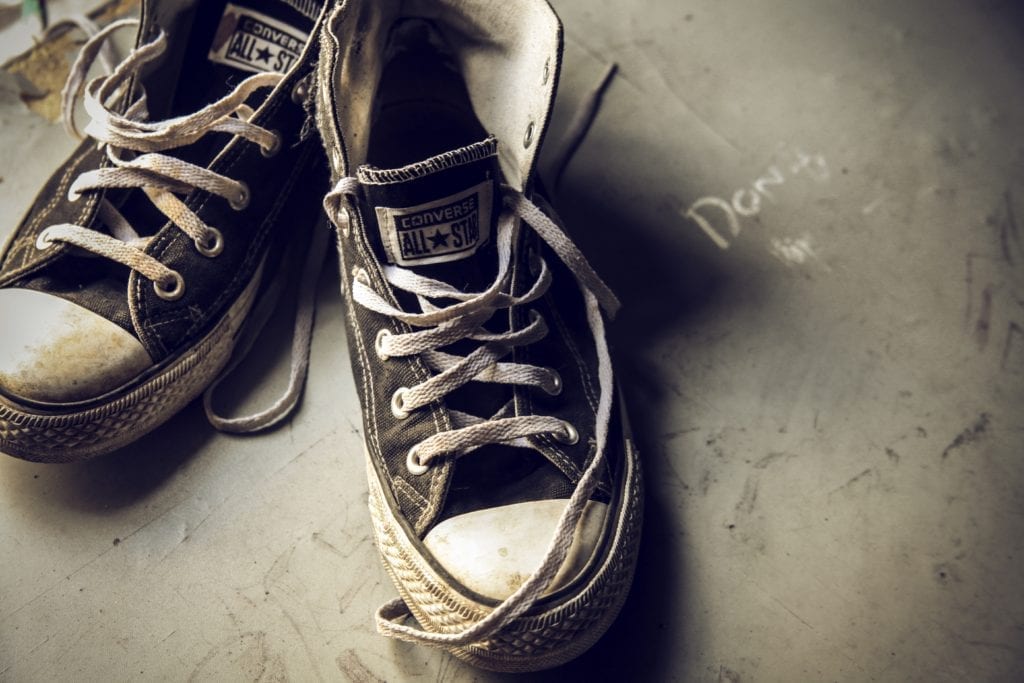
Like insoles, shoes have a lifespan that lasts about 6-12 months with regular use. Your insoles and mid-soles are getting compressed and start to degrade with use and age.
While shoes can last for years, they need to be replaced like tires. At some point, they are not effective at supporting your feet or relieving the impact on your feet and joints.
Consider how often you use your shoes. If you have a lot of miles on your shoes, usually between 300-500, feel comfortable replacing them for a new pair.
Thanks for visiting Helpshoe.com
Related Questions
→How do I care for my insoles?
At times, your shoes may need time to air out and your insoles can be taken out to air out as well. Give them time to dry out completely. You can also wash some insoles if you prefer. Do not put it in the dryer.
→Where to find good insoles?
A shoe store can provide you with hands-on experience with an insole, letting you find ones that fit all your criteria. But stores have limited variety, so buying online is a great option, with some help reading reviews and ratings.


